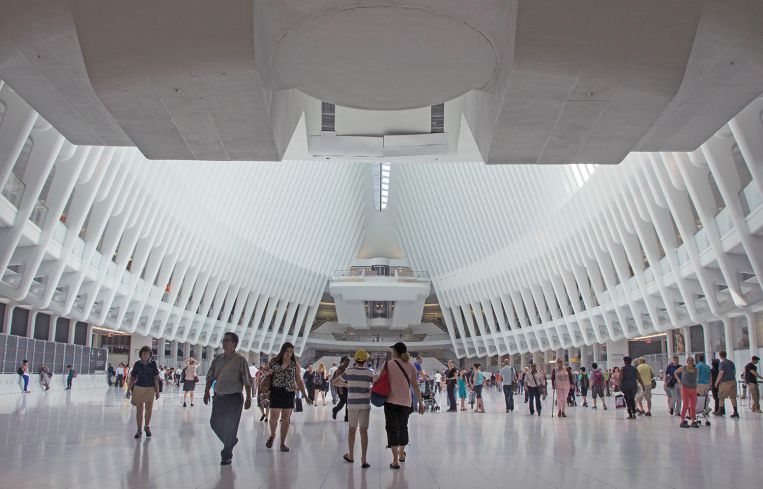The World Trade Center Finally Debuts Its Underground Retail Extravaganza
By Terence Cullen August 16, 2016 2:25 pm
reprints
Exactly 14 years, 11 months and five days since the 9/11 attacks killed nearly 3,000 people, changing New York City forever, the rebuilding process took another major step forward this week.
For the first time in a decade and a half, cash registers sprang open beneath the World Trade Center as Australian shopping mall giant Westfield christened some 365,000 square feet of retail. In total, there will be more than 100 shops when work is completed at the concourse, which spans beneath the buildings and into the World Trade Center PATH station known as the Oculus.
Those retail spots include a who’s who of mid- to high-range retail, featuring Apple, Victoria Secret, Cole Haan and Brietling. As Commercial Observer reported in May, Westfield will also have an area dedicated to pop-up shops, in which stores can take space for the short term.
“Westfield has done a terrific job in curating the complex with the right mix of retailers appealing best to the local population and folks commuting through the Oculus,” said John Brod, an executive at ABS Partners Real Estate. “Apple will be a resounding success much the same as they are at Grand Central [Terminal] but even more so given the residential demographics of the area and depth of workers and tourists.”
Brod said Westfield World Trade Center would also link two other new shopping concourses within just a few blocks: the shops at the Fulton Center (the subway hub also run by Westfield) and the high-end retail at Brookfield Place between West Street and the Hudson River.
Westfield, which did not return a request for comment via a spokeswoman, was part of a Silverstein Properties-led venture that entered a ground lease to control the World Trade Center in July 2001—six weeks before the attacks on Sept. 11. The original 427,000-square-foot complex featured 75 stores and was basically destroyed when planes struck the first 1 and 2 World Trade Centers, sending flames down the elevator shaft and into the concourse, as CNN reported in September 2001.
“[The attacks] took away 15 years of something that never should have been taken away,” said Patrick Breslin, a senior managing director at Colliers International who specializes in retail. “For the developers and landlords who put it all together, I think it’s a great place for the city.”
Rebuilding it, however, has been an uphill battle. Construction of the Oculus, which was led by the Port Authority of New York & New Jersey, was notably behind schedule and double its original $2 billion budget when it became active this March. In November 2015, The New York Times reported that a steady water leak would push the grand opening of the four-block retail concourse into the first half of 2016.
Construction crews were still working into last week, doing buildouts and working on finishes to stores. The smell of drywall and sound of power tools was persistent as you entered the rail hub from the connecting Fulton Center.
But now that it is open, the center is one of several milestones in the rebuilding process as the 15th anniversary of 9/11 approaches. Eataly, one of the centerpieces of Westfield World Trade Center that suffered its own delays, opened on the third floor of 4 World Trade Center at noon on Aug. 11—making it the second New York City location for the Italian food market. By 1 p.m. it was impossible to walk through the popular eatery and grocery, a mix of tourists wearing shorts and office workers sporting ID badges cramming the place. Earlier this summer, Silverstein topped off 3 World Trade Center, the third of four office towers the company has the rights to build at the complex, which is slated to finish in 2018.
The Oculus itself also got another grand opening this week as street entrances to the Santiago Calatravra-designed station became active (commuters have entered through satellite entrances since this spring). A Port Authority spokesman said the street entrances would be another perk for both the office and residential community in the area.


